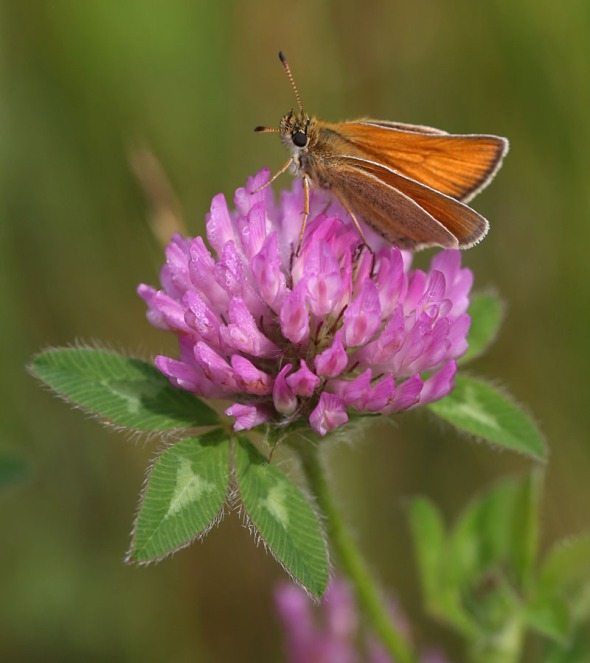Greater Fritillaries

There is a group of butterflies known as greater fritillaries, or silverspots (their underwings often have multiple silver spots). Three species of greater fritillaries can be found in the Northeast: Great Spangled, Atlantis and Aphrodite. All three are similar in appearance, with differences so subtle that the butterfly in a Naturally Curious post last month was mis-identified as a Great Spangled Fritillary, when it was actually an Atlantis Fritillary. Thanks to a sharp-eyed reader, Sue Elliott, this was brought to my attention. If you can approach a fritillary close enough to see the color of its eye, identification is a snap! Great Spangled Fritillaries have amber-colored eyes, Atlantis Fritillaries have blue-gray eyes, and Aprhrodite Fritillaries have yellow-green eyes. Can you identify the two species of fritillaries that are pictured? (Upper right, on thistle – Great Spangled Fritillary; main photo, on Joe-Pye Weed – Atlantis Fritillary)
Naturally Curious is supported by donations. If you choose to contribute, you may go tohttp://www.naturallycuriouswithmaryholland.wordpress.com and click on the yellow “donate” button.
European Skippers Flying in Fields
 Roughly one-third of all butterfly species in North America belong to the Skipper (Hesperiidae) family. Most species possess stout bodies, wide heads and relatively small wings. An early morning walk from mid-May to mid-July through almost any field (especially one with lots of Timothy grass, which the larvae eat) will result in a flurry of tiny orange-brown wings rising into the air. It is likely that the butterflies stirred up are European Skippers (Thymelicus lineola) which roost at night on grass stalks. During the day they feed on the nectar of a variety of low-growing field flowers, including Orange Hawkweed, thistles, Ox-eye Daisy, Fleabane, White Clover, Red Clover, Selfheal, Deptford Pink, Common Milkweed, Swamp Milkweed, Dogbane and vetches. These abundant butterflies were accidentally introduced into Ontario, Canada in 1910, and their range has been expanding ever since.
Roughly one-third of all butterfly species in North America belong to the Skipper (Hesperiidae) family. Most species possess stout bodies, wide heads and relatively small wings. An early morning walk from mid-May to mid-July through almost any field (especially one with lots of Timothy grass, which the larvae eat) will result in a flurry of tiny orange-brown wings rising into the air. It is likely that the butterflies stirred up are European Skippers (Thymelicus lineola) which roost at night on grass stalks. During the day they feed on the nectar of a variety of low-growing field flowers, including Orange Hawkweed, thistles, Ox-eye Daisy, Fleabane, White Clover, Red Clover, Selfheal, Deptford Pink, Common Milkweed, Swamp Milkweed, Dogbane and vetches. These abundant butterflies were accidentally introduced into Ontario, Canada in 1910, and their range has been expanding ever since.
Naturally Curious is supported by donations. If you choose to contribute, you may go to http://www.naturallycuriouswithmaryholland.wordpress.com and click on the yellow “donate” button.


















What Other Naturally Curious People Are Saying